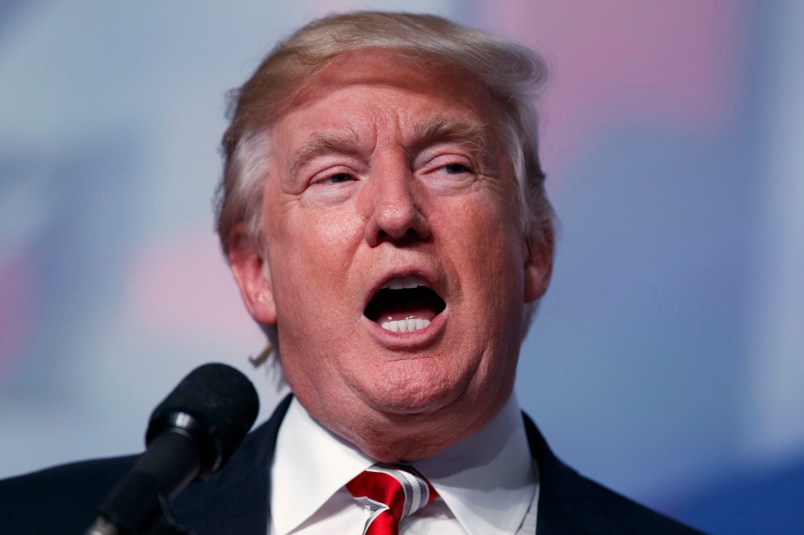WASHINGTON (AP) — A new study that examines some major health care proposals from the presidential candidates finds that Donald Trump would cause about 20 million to lose coverage while Hillary Clinton would provide coverage for an additional 9 million people.
The 2016 presidential campaign has brought voters to a crossroads on health care yet again. The U.S. uninsured rate stands at a historically low 8.6 percent, mainly because of President Barack Obama’s health care law, which expanded government and private coverage. Yet it’s uncertain if the nation’s newest social program will survive the election.
Republican candidate Trump would repeal “Obamacare” and replace it with a new tax deduction, insurance market changes, and a Medicaid overhaul. Democrat Clinton would increase financial assistance for people with private insurance and expand government coverage as well.
The two approaches would have starkly different results, according to the Commonwealth Fund study released Friday.
The analysis was carried out by the RAND Corporation, a global research organization that uses computer simulation to test the potential effects of health care proposals. Although the New York-based Commonwealth Fund is nonpartisan, it generally supports the goals of increased coverage and access to health care.
Economist Sara Collins, who heads the Commonwealth Fund’s work on coverage and access, said RAND basically found that Trump’s replacement plan isn’t robust enough to make up for the insurance losses from repealing the Affordable Care Act. “Certainly it doesn’t fully offset the effects of repeal,” Collins said.
One worrisome finding is that the number of uninsured people in fair or poor health could triple under Trump. It would rise from an estimated 2.1 million people under current laws to between 5.7 million and 7.1 million under Trump’s approach, depending on which of his policy proposals was analyzed.
When uninsured people wind up in the hospital, the cost of their treatment gets shifted to others, including state and federal taxpayers. Trump has said he doesn’t want people “dying on the street.”
The study panned one of Trump’s main ideas: allowing insurers to sell private policies across state lines. Collins said insurers would cherry-pick the healthiest customers and steer them to skimpy plans. Other experts don’t see it as bleakly, believing that interstate policies could attract customers through lower premiums.
A prominent Republican expert who reviewed the study for The Associated Press questioned some of its assumptions, but said the overall conclusion seems to be on target. “You could quibble about some of the modeling, but directionally I think it’s right,” said economist Douglas Holtz-Eakin, president of the American Action Forum, a center-right public policy center.
Collins said the analysis examined some major proposals from each candidate, but did not test every idea.
The Trump proposals included repealing the Obama health care law, as well as a host of replacement ideas consisting of a new income tax deduction for health insurance, allowing policies to be sold across state lines, and turning the Medicaid program for low-income people into a block grant, which would mean limiting federal costs.
The study estimated that Trump’s repeal of “Obamacare” would increase the number of uninsured people from 24.9 million to 44.6 million in 2018. But then his replacement proposals would have a push-pull effect. The tax deduction and interstate health insurance sales would help some stay covered, but the Medicaid block grant would make even more people uninsured.
“The people who would actually gain coverage tend to have higher incomes,” said Collins.
The result would be an estimated 45.1 million uninsured people in 2018 under Trump — an increase of 20.2 million, reversing the coverage gains under Obama.
The Clinton proposals analyzed included a new tax credit for deductibles and copayments not covered by insurance, a richer formula for health law subsidies, a fix for the law’s “family glitch” that can deny subsidies to some dependents, and a new government-sponsored “public option” health plan.
Taken together, the analysis estimated that Clinton’s proposals would reduce the number of uninsured people in 2018 to 15.8 million, which translates to a gain of 9.1 million people with coverage. Not included were Clinton’s idea for allowing middle-aged adults to buy into Medicare and her plan to convince more states to expand Medicaid.
Collins said the researchers will update their estimates for both campaigns as more details become available.
The health care report follows another recent analysis that delved into the candidates’ tax proposals. That study by the nonpartisan Committee for a Responsible Federal Budget found that Trump’s latest tax proposals would increase federal debt by $5.3 trillion over the next decade, compared with $200 billion if Clinton’s ideas were enacted. The Trump campaign disputed those findings.
___
What political news is the world searching for on Google and talking about on Twitter? Find out via AP’s Election Buzz interactive. http://elections.ap.org/buzz
Copyright 2016 The Associated Press. All rights reserved. This material may not be published, broadcast, rewritten or redistributed.






